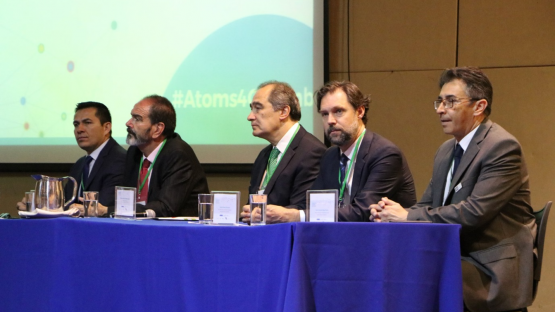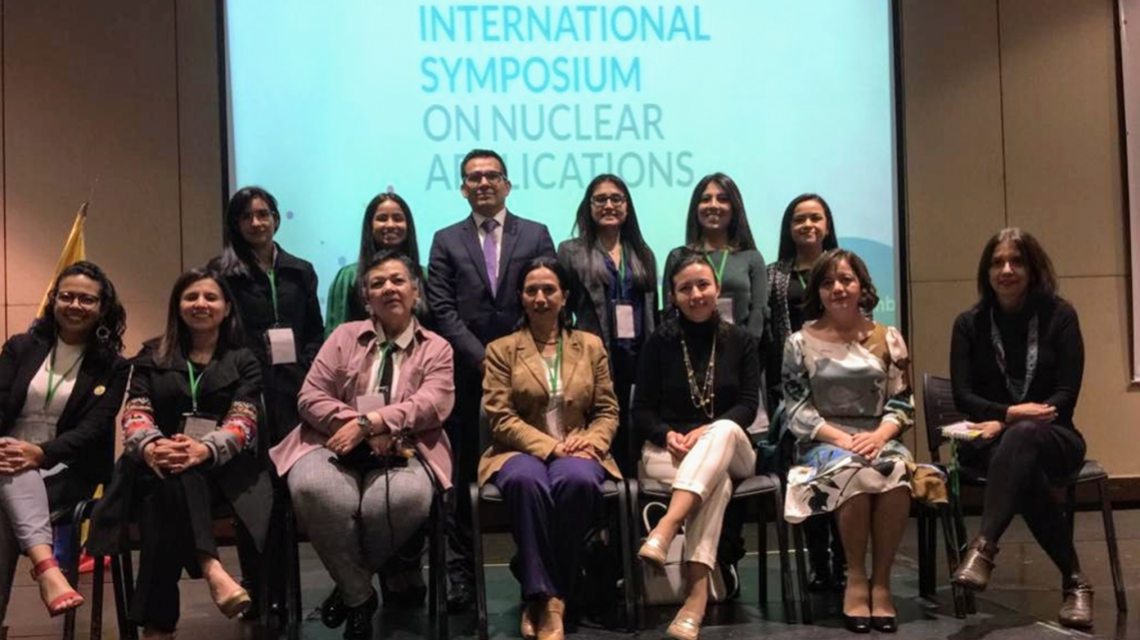From 5 to 8 November, approximately 450 registered participants—including experts, academics and counterparts from over 20 national organizations—attended the IAEA’s symposium on Nuclear Applications in Bogotá to take stock of Colombia’s recent and historic achievements in the application of nuclear technologies, and to explore and remedy the obstacles which prevent greater engagement with those technologies.
Across more than six decades of technical cooperation, the IAEA has supported its Member States as they unlock the economic, social, healthcare and development potential of nuclear science and applications. Colombia is no exception to this trend—through workshops, expert visits and procurements, for many years the IAEA has worked with Colombia to sustainably manage water resources, to measure and monitor ocean acidification, to ensure food safety and food exports and to strengthen capacities in nuclear medicine.
Organized in cooperation with the Colombian Geological Survey and the Ministry of Mines and Energy and held at the Gonzalo Jiménez de Quesada Convention Centre, the symposium was designed to facilitate substantive discussions between national and regional stakeholders—including experts from Argentina, Brazil and Cuba—in order to promote greater collaboration between nuclear institutions on matters of nuclear science and applications, nuclear safety, capacity building, gender mainstreaming and more. Participants also explored how to the use nuclear and stable isotope techniques to address new and emerging challenges related to environmental contamination, agriculture and climate change.
Counterparts from the National University of Colombia, the Marine and Coastal Research Institute, the Colombian Agricultural Institute, the National Cancer Institute and the National Museum were among the participants of the sessions., along with academics from other Colombian and Latin American higher education institutions.
“Since joining the IAEA in 1960, Colombia has built capacities and established new nuclear facilities, whose work cuts across sectors and disciplines and whose services are now at the disposal of the Colombian population, generating positive socio-economic impact and change,” said Luis Carlos Longoria Gándara, Director of the IAEA’s Division for Latin America and the Caribbean, who underscored the untapped potential of nuclear technologies in his opening remarks. “The objective of the symposium is to further strengthen the collaboration among national institutions and to start a dialogue that will further unleash the great potential of the nuclear sector in the country for the benefit of the Colombian population and the country’s positioning in the region.”







